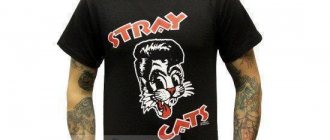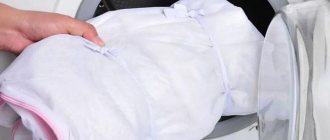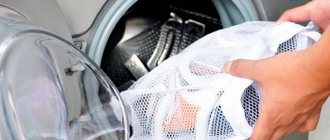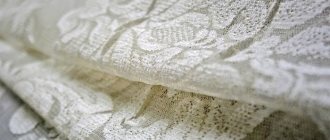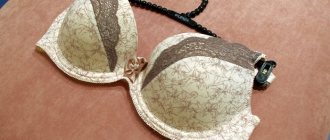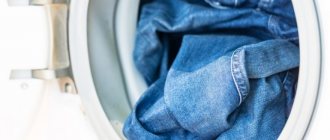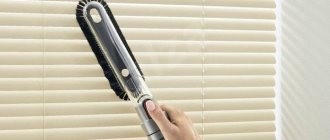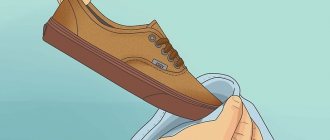Microfiber care
Microfiber is a stain-resistant material with a smooth, velvety texture. Microfiber furniture is easy to clean due to the microscopic fibers.
However, if you don't clean your sofa regularly, it can become incredibly dirty. A microfiber sofa is a combination of pure polyester and microfiber materials, and they cannot always be cleaned with water alone. However, you can use water to clean if your microfiber has a 'W' on its label.
How to Clean a Microfiber Sofa
- Remove the cushions from the sofa.
- Vacuum the sofa thoroughly to remove dust and debris.
- Clean the sofa with a slightly damp cloth to remove dirt from the surface. It is advisable to use a white fabric, as colored fabric may leave its color on the sofa when cleaned.
- We remove stains by spraying alcohol (isopropyl alcohol) or clear alcohol (gin, vodka) onto the stained area, scrub with a sponge or soft brush and clean with a cotton cloth. Unlike water, alcohol evaporates quickly and is therefore less likely to be absorbed deeply into the fabric, meaning there will be no streaks left after cleaning. If the sofa has the letters SW on the label, then you can use water-based solutions such as gentle soap, carpet cleaner, upholstery shampoo, etc.
- Let the fabric dry. To speed up the drying process, you can use a hair dryer.
- Finally, scrub the surface of the fabric with a soft brush in a circular motion. This will help fluff up the microfiber and soften the tough fibers.
- Before cleaning the entire sofa, test the cleaning solution on a small area of the fabric. Cleaning microfiber with soap or detergent, unless recommended, can destroy the material's ability to repel dirt and damage its texture.
- It is recommended to avoid saturating your sofa fabric with water or cleaning solution as it may leave stains.
- Although microfiber furniture is stain-resistant, it is vulnerable to fresh water spills, so you should soak the spill with a paper towel as soon as possible to prevent the liquid from seeping deep into the fabric.
- You should clean your sofa at least once a month. Plus, vacuum up dust and dirt once or twice a week, especially if you have pets.
Source
Is the fabric capricious?
The second name of this material is microfiber. Where is it from? The fact is that microfiber consists of the finest polyester threads that are intertwined with each other.
It is believed that this material is unpretentious; caring for it does not require special knowledge and skills. But:
- microfiber, like other synthetic fabrics, does not tolerate high temperatures;
- The use of aggressive cleaning agents, bleaches and rinse conditioners is not recommended. Do not vigorously wring out microfiber products.
Important! Manufacturers claim that even after two or three washes performed without taking these nuances into account, the item will not deteriorate. This process occurs gradually. It’s just that the fabric will last noticeably less than the period stated by the manufacturer.
Pros and cons of the material
Microfiber is a microfiber that has a complex structure. In composition, it is a mixture of synthetic materials. Usually this is polyester, polyamide and others. This fiber has miniature pores. When friction occurs on the surface, an electrostatic effect occurs in the towel, due to which moisture is absorbed into the micropores. Unlike natural fibers, microfiber has a number of advantages among towels. Here are just a few of them:
- Can absorb moisture up to 8 times its own weight. Compared to cotton or linen fabrics, they are smaller in size and weight. For comparison, the weight of a product made of this material with dimensions 30x60 weighs only 37 grams. And its terry analogue is up to 200 grams. Here the difference is more than 5 times. These data are provided in dry form, but if the terry towel is wet, it will weigh even more.
- The material is very soft, pleasant to the body. You can dry yourself with it without discomfort even when the towel is wet. If necessary, it can be squeezed out almost until dry.
- These towels have a high drying rate. In the sun or slight wind they become completely dry in a maximum of 20 minutes.
Towels are additionally treated with antibacterial compounds. This prevents the appearance of odor for the entire period of use of the product. Bacteria do not multiply in the fabric, so this microfiber is hypoallergenic. Such wipes not only prevent the growth of bacteria inside, but also collect them from the surface like a sponge. Therefore, after cleaning the room will not only be cleaner, but also much safer.
Other benefits of microfiber:
- High wear resistance. Towels do not lose color for a long time and retain their shape. Even with intensive use it will last at least 3 months. High quality towels can withstand up to 300 washes. Less expensive ones are up to 200, and the cheapest ones are 90.
- Very compact and will not take up much space in your bag. Even a large towel measuring 170x90 when rolled up will be no larger than a fist. For this reason, they are widely used for travel and training.
- Microfiber towels are versatile and come in a variety of sizes and colors. There are small ones, for example, 40x40 cm, intended for hands. Large sizes - 170x90 cm are used for baths. They are usually equipped with protective covers with a fastener.
Microfiber towels with pile absorb more moisture than those with a smooth surface. Outwardly, they resemble ordinary terry ones. Their advantages are that they are stronger and are usually made in larger sizes. They will become indispensable for hiking and outdoor recreation.
These towels can be placed in your bag while still damp. They will dry on their own in their mesh cover. There is also a loop on the case. It is convenient because it can be attached to a belt, backpack, or, for example, in the forest, hung from a tree using a loop.
In addition to all the positive qualities, microfiber products have several disadvantages. They should not be dried near an open fire. It melts when exposed to high temperatures. Unlike a terry towel, this towel does not heat up. On the beach you won’t be able to wrap yourself in it to protect yourself from the cool wind.
Towels that are too dirty stop absorbing moisture from the surface. Typically, napkins used in the kitchen or for washing cars become clogged with grease and dirt. Fat clogs pores, cutting off the supply of air and moisture. There are two options to solve the problem: replace or wash thoroughly.
Machine wash or hand wash?
There is no clear answer to this question. Much depends on the situation. Thus, machine washing is not contraindicated for microfiber products, but hand washing is preferable. But each of these modes has its own nuances.
Wash by hand
Even stubborn dirt quickly disappears from microfiber under the influence of powder, soap and skillful hands. It is worth remembering the following points:
- The water should be warm. The recommended temperature is no higher than 50 degrees.
- The product must not be boiled or soaked in hot water.
- When rinsing, use clean water.
Machine washable
It has been proven that this procedure does not harm microfiber at all, especially if you follow the following recommendations:
- The drum should be loaded no more than ¾ full . This is due to the fact that microfiber is a voluminous material;
- choose a delicate mode and a temperature of no more than 40-50 degrees;
- Microfiber products with fluffy pile (napkins and towels) are best washed separately from other items. This fluffy fabric will “donate” small hairs and specks of dust to its “neighbors”;
- The ideal option for spinning is its complete absence . Microfiber dries quickly, even if you hang it over the bathtub and wait until all the water drains naturally. In the case when time does not wait, let’s do a hand squeeze (very delicate). The same procedure, but in a washing machine, microfiber is contraindicated.
Handwash
Getting rid of stains without a washing machine will not be difficult: all dirt from microfiber can be easily removed with soap and powder.
Basic washing rules:
- put the products in warm water, the temperature of which should not be higher than 50 degrees;
- boiling is unacceptable: microfibers become deformed and the towel becomes unusable;
- use laundry soap, non-aggressive washing powder, liquid detergent;
- pre-soak heavily soiled kitchen and floor rags for 1 hour;
- there is no need to rub the material vigorously, stains can be easily removed using detergents;
- rinse things only in clean water, without conditioner;
- dry synthetics in the room or outside away from colored laundry: although microfiber itself does not fade, it quickly absorbs paint.
Advice It is better to use a powder with a pH of less than 10 units.
What washing products should I use?
An important rule that must be followed is that there should not be a lot of powder .
It's a good idea to check the label before purchasing a detergent for this fabric . For example, you should discard the powder if it contains bleaching components. It is recommended to look for packaging that states that the pH is less than 10 units . The ideal option would be to wash with powder intended for children's products.
By the way! Microfiber can be easily washed with regular laundry soap. You can grate it and add it to a bowl of water. This procedure is suitable in cases where soaking is required. Another way is to rub particularly dirty areas with a bar of soap, and then rinse the product.
How to remove stains and whiten?
If the product has lost its former freshness, there is heavy old dirt on it, it is recommended to use long-term soaking . The item is placed in a basin with warm water and cleaning agent for 10-12 hours. After this, particularly stubborn stains can be scrubbed with soap.
Microfiber cloths are popular among housewives. They get dirty quickly, especially kitchen ones. But you don’t want to throw away something that costs money. It’s better to make sure that it still serves, it’s not difficult at all. For example, you can apply a mixture of baking soda and water to a stain (even a greasy and stubborn one). Then the rag should be placed in a soapy solution and left to soak for 1-3 hours. When the specified time has expired, it is recommended to rub the stains again and wash the product completely (you can use the same solution), and then rinse well.
You can get rid of impurities using lemon juice . This is an excellent natural bleach that is completely safe for microfiber. The juice of half a lemon is enough for 5-7 liters of water. The ingredients need to be mixed, dirty things should be placed in the solution and left there for 2-3 hours. After that, they are washed in the usual way for microfiber.
Among chemical agents, the use of “Vanish” . It carefully removes dirt and does not damage fine fibers. The products become not only clean, but also soft.
Features of fabric care
Microfiber can last for several years and practically not lose its visual appeal. For this statement to really work, experts advise:
- microfiber or other colored items nearby This material does not fade, but eagerly absorbs paint from neighboring poorly painted raw things.
- The ideal place for drying is a balcony on the sunny side in warm weather . Microfiber does not fade or deform under such extreme conditions. On the contrary, it dries quickly and becomes even softer.
- Ironing is not prohibited. She is unwanted. Before using a hot iron over the entire product, it is recommended to iron an inconspicuous edge . If it is deformed, then the procedure should be abandoned. Fortunately, microfiber practically does not wrinkle, so there should be no problems.
- If you want to iron microfiber bedding, it is recommended to do this with a dry cotton cloth. It is better to choose a delicate mode .
- All kitchen rags and microfiber towels will last a long time if they are washed not when they get dirty, but daily during the period of use . It does not take a lot of time. Simply rub the product with soap and rinse under running water.
- If the stain appears on the upholstery, it is also recommended to use a soap solution. Apply it in a circular motion, wait until it dries, and then rub (but not too intensely) with a soft brush.
Microfiber is an indispensable material these days. It is so convenient in everyday life that it is incredibly difficult to imagine life without it. Washing microfiber will not be an unpleasant procedure if it is done on time and taking into account the recommendations given in the article.
Source
Microfiber washing
- Microfiber cloths should be washed after each use to remove all collected dirt, dust, and germs. You don't have to wash it in a washing machine, you can wash it by hand. But periodically (once a week) you should wash the napkins in the washing machine.
- Under no circumstances should you wash microfiber together with items made from other fabrics, because microfiber will attract fluff, lint, etc. Co-washing is acceptable if you use laundry bags, which will prevent the microfiber from coming into contact with other fabrics.
- The powder is best used for colored fabrics or less alkaline (PH maximum 10.5). Select the powder dosage according to the instructions for your washing machine and powder.
- It is recommended to wash microfiber at a temperature of 60 degrees or lower. High temperatures have a negative effect on the unique fibers of the fabric.
- When washing microfiber, do not use bleach. This contributes to the destruction of the fabric and reduces its service life.
- During rinsing, the use of an antistatic agent (rinse aid) is unacceptable, since static electricity of microfiber is one of its advantages.
Main varieties by material
The materials of cleaning wipes differ in the composition of the raw materials. Napkins are made from cellulose, microfiber, viscose, and bamboo.
Cellulose
The natural raw materials from which the napkins are made meet the requirements of quality and environmental safety. The hygroscopic material consists of 70% cellulose and 30% cotton. Cellulose fibers have the ability to swell when exposed to water. Cotton threads give the napkin elasticity.
The peculiarity of the use of the material is that preliminary moistening is required. A slightly moistened product easily absorbs and retains a large amount of moisture. Used to remove dust and dirt. At the end of cleaning, just rinse the napkin in soapy water. When dry, the material hardens, which prevents fungi and bacteria from multiplying. When dry, it should not be deformed.
Microfiber
The material contains polyester and polyamide.
Microfiber cloths are produced in 2 versions:
- Woven. Synthetic threads have the same weave as cotton fabric. The napkins resemble pieces of cloth and absorb water well without leaving any traces after drying. Recommended for wiping matte surfaces.
- Non-woven. The synthetic material is obtained by processing fibers under pressure. Absorbs moisture well and has polishing properties. Allows you to remove grease marks without using cleaning agents.
Non-woven material has a denser structure and there is no hairiness at all. Microfiber is used for dry and wet cleaning. Cloth products are effective for removing dust without wetting. Non-woven microfiber is more suitable for wet cleaning.
Universal wipes can be washed at a temperature of 60-95 degrees in a washing machine or by hand with powder. Do not dry on a radiator or iron.
Viscose
A viscose napkin is a modified version of a cellulose cleaning product. Artificial fibers are obtained from natural raw materials (cellulose) as a result of chemical processing. The material can be used for dry and wet cleaning. A dry cloth in contact with plastic does not electrify the surface.
When wet cleaning, the napkin must be rinsed in water without detergents. Drying - with natural air circulation. Service life is limited compared to other types of materials. The advantage is low cost.
Viscose fabric is used in latex wipes. The cleaning product resembles a three-layer sandwich: latex-viscose-latex. This fabric is more durable than pure viscose. Use wipes only for wet cleaning. The advantage is high-quality cleaning of any surface without streaks. Does not remove fingerprints on glass.
Bamboo
Bamboo fabric is a natural material without chemical impurities and additives, having a porous tubular structure.
The advantages of bamboo products are explained by the structural features of the fiber:
- They remove fat deposits well and are easily degreased with hot water when washing. The products can be used for washing dishes without detergents.
- Hygroscopic.
- They don't leave streaks.
- Not susceptible to microbial infection.
- Service life is unlimited.
- Number of washing cycles – 500 times (for machine washing – without conditioner; do not tumble dry, do not iron).
- Environmentally friendly, do not cause allergies.
Bamboo napkins are suitable for dry and wet methods of cleaning an apartment/house.
How to wash microfiber: what you need to know about it
Microfiber towels are gradually coming into every home, replacing similar products made from cotton, linen, and bamboo. And there is an explanation for this. Microfiber products absorb four times more moisture than products made from natural fabrics. At the same time, they remain dry for a long time. And after washing, microfiber towels only need two to three hours to dry completely, depending on the air temperature.
But many are still hesitant to try using microfiber towels due to the fact that they do not know the rules for caring for them. Although everything is much simpler than you imagine. We will share with you the basic rules for caring for this fabric and teach you how to wash microfiber so that it does not lose its properties. Following these rules will help you preserve the life of your towels longer and at the same time save on the purchase of new products.
Video review of microfiber
The video shows a vanilla yellow microfiber made from polyester. The fabric has been shown to be wrinkle-resistant and ideal for soft loungewear.
See similar articles
- Fleece is a soft polyester fabric for warm clothing.
- Chintz is a lightweight cotton fabric for summer clothes.
- Bouclé - voluminous fabric with knots on the surface
- Crepe chiffon is a translucent fabric with a grainy surface.
- Blackout - light-proof dense fabric for curtains
- Modal - lightweight cellulose fabric for linen and clothing
If you liked the article, share it with your friends!
What is microfiber?
Taking care of microfiber towels is very easy if you know the rules. But first you need to understand what fabric they are made of. Microfiber is a synthetic fabric that is woven from the finest fibers of polyester, polyamide and nylon, and this is what determines how to wash it. At the same time, the fibers are thinner than a human hair and in cross section resemble the shape of a star. Moisture and dirt in no case penetrate the fibers, but are retained between the grooves. Therefore, the fabric is very easy to clean from any stains.
With proper care, we extend the life of any item. Washing and drying microfiber towels ensures they are soft, work properly, and provide the results we strive for. But if you ignore simple rules, you can pay a lot of money for microfiber products, and then after a while throw them all away. Of course, the towels will not tear, and may not even lose color and shape. But the properties of the fabric will be lost very quickly. And this will not speak at all about the poor quality of the towels, but about the fact that you do not know how to properly care for them. Microfiber towels, house rags and mops can last for years. Just always follow our recommendations.
What kind of fabric is this and what is it afraid of?
Microfiber is woven from the finest fiber - polyester, polyamide or nylon. It is used to make bedding, towels, cleaning equipment, furniture, eyeglass wipes and car seats.
Synthetics do not tolerate hot water, ironing, bleaching and aggressive detergents. It is also not recommended to twist it too much when spinning, although the material is resistant to deformation. The fabric does not like the effects of fabric conditioner; because of it, it loses its unique properties.
For information: Due to improper care, microfiber does not tear or lose its properties instantly, but it wears out noticeably faster. If you wash the products correctly, they will last for several years.
Manufacturers usually indicate on the label how to care for the material, whether it can be machine washed or whether it is recommended to remove dirt manually. There is also information about temperature conditions.
How to wash microfiber?
Choosing the right detergent for washing microfiber fabrics is very important. To reduce damage and extend the life of your towels, it is important to choose a mild detergent.
Powder
Microfiber products can be washed with regular washing powder. The main thing is that it does not contain aggressive components that negatively affect the microfiber structure. If you don’t know how to remove very dirty stains, use Vanish. In this case, a prerequisite is strict adherence to dosage instructions.
Laundry soap
A very good option for hand washing. If you only have one or two microfiber cloths that urgently need to be washed, laundry soap will suffice. The product, available to every housewife, is soft enough and safe for microfiber. You just need to lather the product well, rub and rinse thoroughly. In case of heavy contamination, it is recommended to repeat the process.
Liquid detergents
Liquid laundry detergent is almost ideal. Once again, pay attention to the softness of the drug. It should not contain heavy abrasive substances. Give preference to natural and unscented products - they are not so harsh. Dilute the required amount of liquid detergent or gel in warm water and wash. Add the product to the washing machine according to the instructions.
Important! Never use conditioner when washing microfiber fabrics! Fabric softener clogs porous material, resulting in less effective cleaning of surfaces and shortening the life of towels. Wash in any washing machine, with a mild detergent, but never with fabric softener.
How to choose quality microfiber
When choosing microfiber products, you should pay attention to the following factors:
- Price. It cannot be extremely low. High-quality, expensive equipment is used in production, which is reflected in the price.
- Fiber material. The composition can use both polyamide and polyester microfiber in their pure form, and in combination with other admixtures, for example, lycra or natural fibers, which determines the properties of the fabric and the characteristics of the final product.
- Pay attention to the degree and uniformity of coloring.
- Pay attention to the care label. If there are points that contradict the basic care of microfiber, you should refuse the purchase.
- And the main advice is to rely on your own experience and intuition when choosing products. Try it on, touch the material, if you doubt the quality, don’t buy it. The thing should give you, first of all, confidence in quality and a feeling of comfort.
Rules for washing microfiber products and towels
Be sure to follow the guidelines to properly wash microfiber items. After all, the main task of the process is not just to remove dirt from the fabric, but to maintain its softness and absorbent properties.
Separate the towels
There are many different types of towels, made from different microfibers and designed for different purposes. Microfiber kitchen towels will definitely be dirtier than travel or sports towels you use to dry your body. Therefore, before washing, it is useful to divide the items into groups depending on where you use them. Washing towels in separate groups reduces the risk of cross-contamination in the process. It is very good when the color scheme of products for the same purpose coincides. Therefore, divide all towels into groups as much as possible.
How to care for microfiber products
Proper washing of microfiber products can extend their service life by several years.
How the canvas works
- Napkins should be washed at a temperature not exceeding 60 °C without conditioners and bleaches. "Chemistry" can reduce the ability to absorb large amounts of moisture.
- In case of serious contamination, you need to soak the fabric in a concentrated soap solution, and then wash it as usual.
- Drying on hot radiators or near other heating devices can damage the product.
- Ironing the product with a hot iron is also not recommended. The fibers are very susceptible to high temperatures and can therefore become deformed. This minus was easily compensated for by the wrinkle-resistant microfiber structure.
In reviews, negative emotions are often associated with cheap synthetics, which unscrupulous manufacturers pass off as microfiber. Production technology is very expensive and therefore, often in order to save money, some use low-quality raw materials. Fortunately, synthetics are easily identified by their pungent chemical smell, while real microfiber does not smell and, moreover, does not acquire an odor later.
For your information! Also, synthetics shed and stain a lot, and if the product is original, then this problem should not exist, even if the rags are poisonous green or red. And finally, microfiber’s resistance to deformation and wear does not allow cheap raw materials to compete with themselves.
